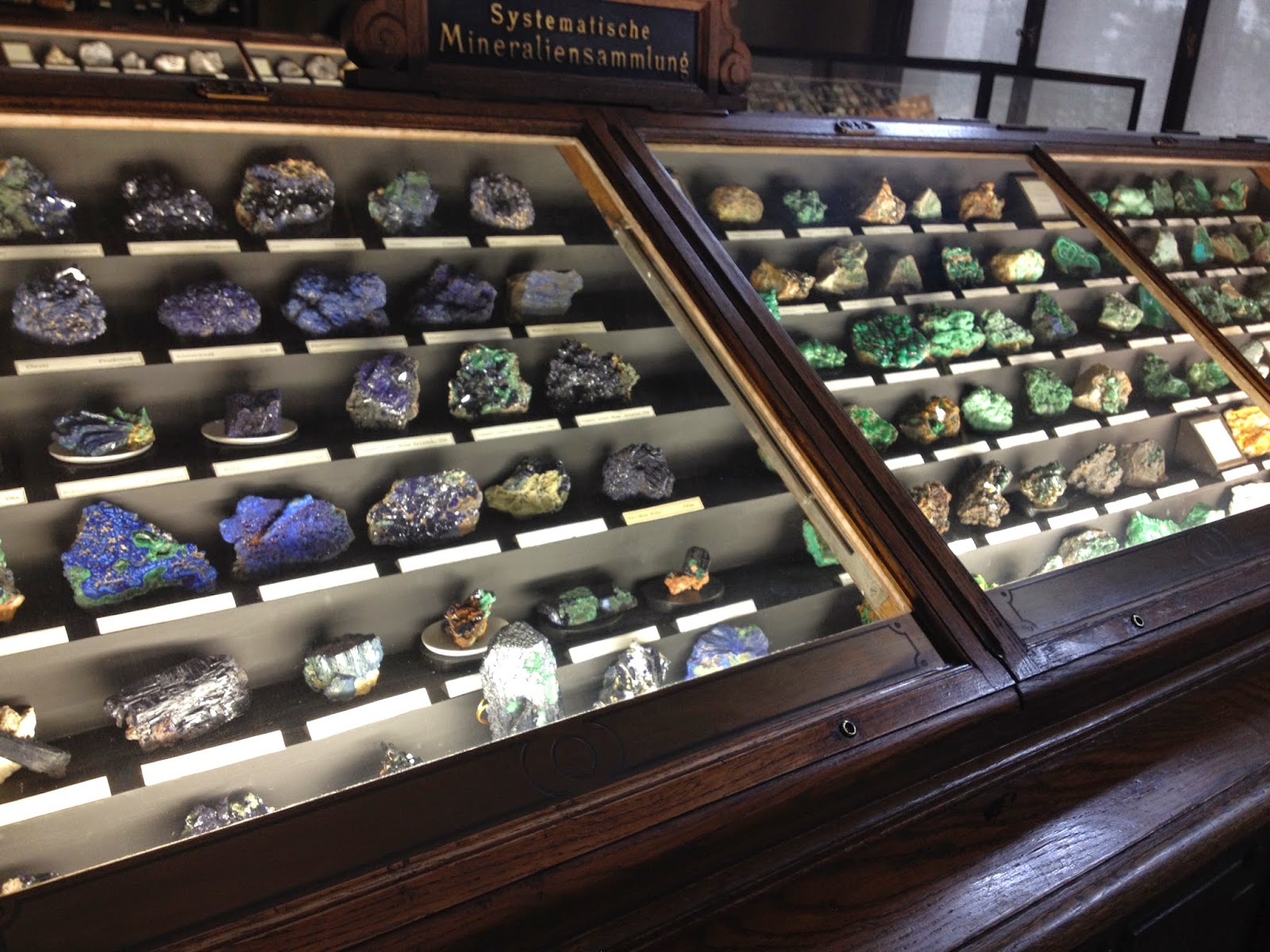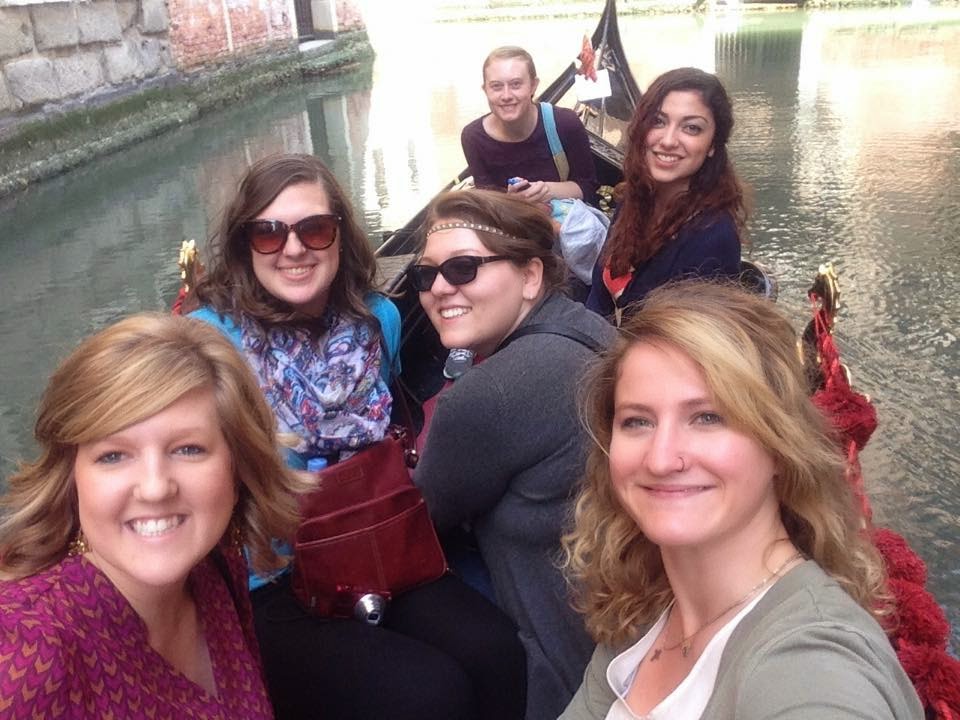It is hard to put into words the emotions I felt as I made my way through Auschwitz where 1.5 million peoples lives came to an end. No matter how much you discuss the facts in class, nothing prepares you for walking on the same road 100s of 1,000s Jews, Poles, Gypsies, Soviet prisoners of war and prisoners of other ethnic groups walked, straight to their deaths.
 |
| Auschwitz I entrance. |
 |
| Auschwitz II Birkenau entrance. |
As a class we made our way through Auschwitz, the largest Nazi German concentration camp out of six. The camp consisted of three different areas; Auschwitz I, Auschwitz II, and Auschwitz III. When entering either of these camps you were considered lucky if you weren't part of the group that was sent immediately to death before even checking in. The old, weak or ill, babies or young children never made it past the selection process. Only 25% of the people would survived the selection process. Out of the first 728 polish prisoners that arrived in Auschwitz I, 300 survived the war and there are still six alive today.
We walked I through the famous "ARBEIT MACHT FREI" (translated: work makes you free) gate and into Auschwitz I. Up to 20,000 people would be in the camp and each barrack would have anywhere from 700-1000 people living inside. There were toilets and sinks inside these buildings which wasn't the case for the people living in Birkenau. As if just living in a regular barrack wasn't bad enough there were some that were even worse such as Block 11. It was know as the "block of death" and it was like a prison inside of a prison. Inside here there were starvation cells where they would leave people in there to starve to death. There were also suffocation cells that they packed full of people and you would just suffocate to death. Standing cells was another form of toucher which five men would be crammed into a tiny cell which they entered through a small door on the floor. If you survived the night in a standing or suffocation cell you would go work a full 12 hour day and be placed back inside your cell at night.
As I walked through these cells I couldn't help but tear up. It was unimaginable what these people suffered through. People were dying due to starvation, suffocation, and medical experiments. They could also be murdered by being shot in the at the "wall of death". They would stand facing the wall naked and then would be shot in the back of the head one by one. At Auschwitz I there was also a gas chamber. They would squeeze up to 1000 people in a room and drop the canisters of gas inside. It would take 20 minutes for them to suffocate and die. The bodies would then be cremated. This gas chamber was shut down in July 1943 due to "lack of efficiency".
 |
| Pots, pans and cups brought by prisoners. |
In some of the blocks we walk through were stored the personal items of the people that came to the camp. When people were transported to the camp they were allowed to bring a bag weighing 25kg. They were told that they were going somewhere nice they could live and work. Little did they know they bought their own train tickets to their deaths.
Many of them brought personal belongings as well as ordinary kitchen utensils. You didn't get to keep any of the items you brought. Upon arrival you had to hand over your bag and you had to change into "pajamas" the uniforms which they made the prisoners wear.
It wasn't just simple personal belongings that the Nazi's would keep. They kept the bags, shoes, glasses, prosthetics, and human hair. Tons of human hair was being shipped back to German and being used in the textile factories. When the Russian arrived at Auschwitz they found 7 tons of human hair bagged up and ready to be shipped.
My breaking point was seeing the wall of hair. I just felt sick and it brings tears to my eyes every time I think about it. These factories in German knew exactly what it was but yet they continued to use it as stuffing and for making material. We were not allowed to take pictures in this room but I was able to take some of the other belongings.
 |
| 40,000 pairs of glasses. |
 |
| 80,000 pairs of shoes. |
 |
Prosthetic legs, arms, crutches, and braces.
|
 |
| A map of the layout of Auschwitz II- Birkenau. |
At this point I didn't know what to think and I felt helpless and I can't help but image what the people who lived there felt, but Auschwitz I wasn't even the worst of it. We headed to Auschwitz II-Birkenau, the largest and the main extermination camp which had 100,000 prisoners at a time. Prisoners would be in buildings that were originally stables that held 52 horses. Up to 1000 people would be living in these barracks without any toilets, sinks, or heat. You would be allowed to use the bathroom (located in a separate building) twice a day for 30 seconds each. 630 men would be using the bathroom at the same time. You could be shot if you used a restroom during working hours.
Working in the bathrooms would have seemed like the worst job out of them all but several survivors said it saved their lives. They were inside out of the elements and Nazi's wouldn't enter into the buildings because of the smell so they were able to talk with each other and exchange goods. It was the "black market" within the camp.
 |
| The barracks that 1000's of prisoners lived in. |
 |
The toilets which prisoners were allowed to use twice a day.
Workers would crawl down into the toilets and with their hands and a bucket scoop them out. |
People were fed "three meals" a day. Breakfast was black water, a coffee like substance, lunch would be soup that was made from rotten vegetables and supper was a piece of bread with a teaspoon of jam. They would take in barely over 1000 calories a day which they easily burned during their 12 hours of work. With this intake of calories it was calculated that people would't survive over three months and new prisoners would replace those that died.
 |
| Entrance to the gas chamber #3. |
At Birkenau there were four main extermination gas chambers and crematoriums. People thought they were going to get a shower. Walking up to the building they would see flowers growing all around it. After entering the first room they would strip down and go into the main room. Nazi's would pack 10,000 people inside and then drop the gas canisters inside from the roof. A guard would watch through a window and after 20 minutes give the signal to open the doors. What's even more sickening is that other prisoners would have to haul the dead bodies into another room where they cremated them. In one day 1,500 bodies could be burned.
The Nazi's wanted to dispose off all the evidence so the prisoners who worked in the gas chambers didn't work there long. They would soon be replaced by new works so that no one knew what was going on. To dispose of the ashes of the bodies they burned they would use them as fertilizer or dump them in the woods and into ponds.
 |
| A memorial next to extermination chamber #3. |
 |
| A pond that they dumped the ashes of burned bodies into. |
At the end of the war when the Nazi's knew that the Russian would be coming they marched 56,000 prisoners and left the rest of them to die in the camp. On this "death march" to another camp 9,000 peopled died. The gas chambers were also demolished and buildings burned to destroy as much of the evidence as they could.
A memorial was built between the two main gas chambers #2 and #3, built in 1967. There are plaques in every language of the victims along the front. They read "For ever let this place be a cry of despair and a warning to humanity, where the Nazis murdered about one and a half million men, women and children mainly Jews from various countries of Europe. Auschwitz-Birkenau 1940-1945"
These words need to be taken to heart by everyone around the world. History can not repeat itself!
 |
The English inscription in front of the memorial.
|
This was the most eye opening, emotional, and memorable place I have been. I will never forget what I saw at these camps and tears swell in my eyes every time I think about it. It's unbelievable what happened here. May those who perished rest in peace, you will never be forgotten.











































